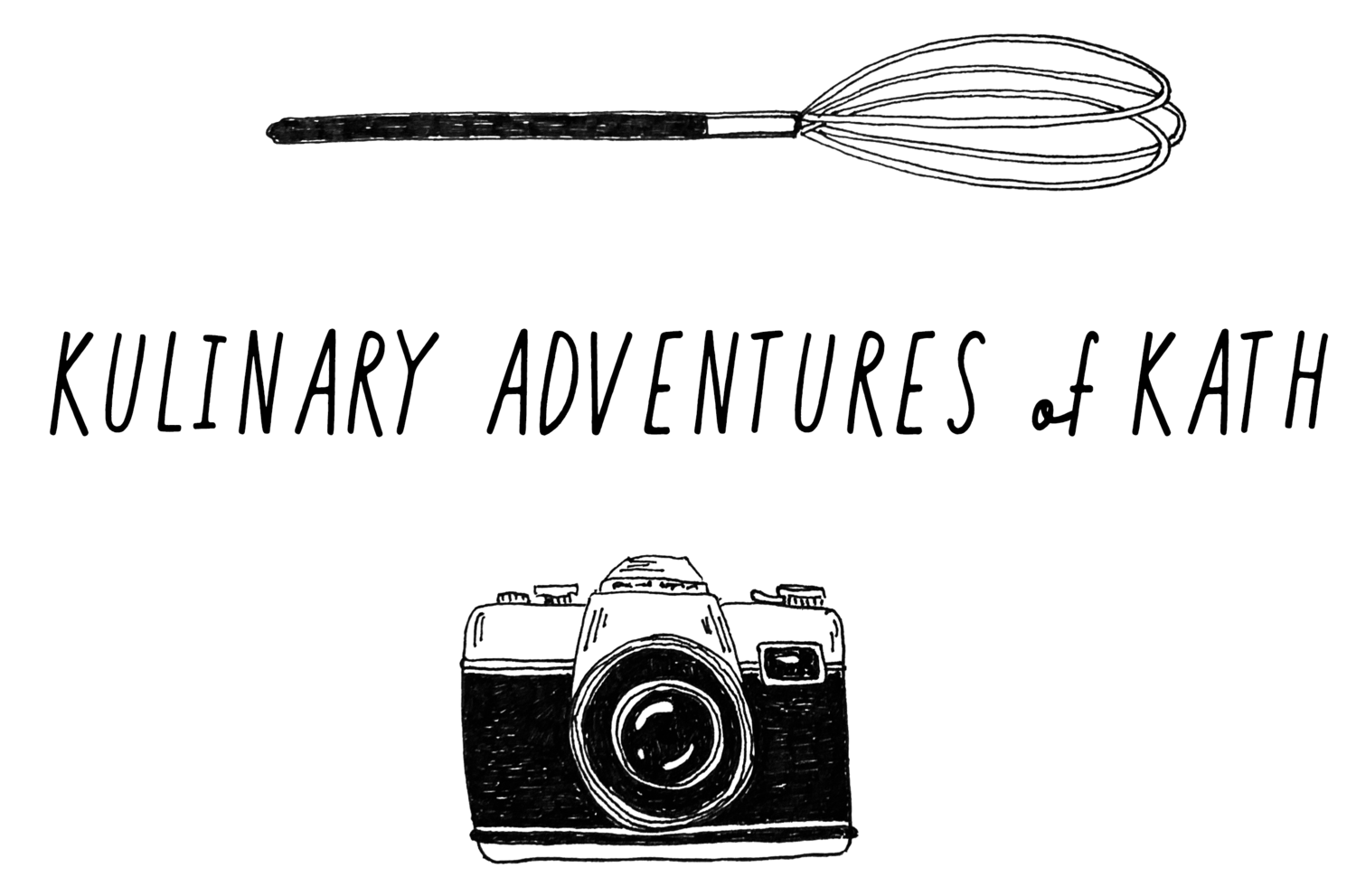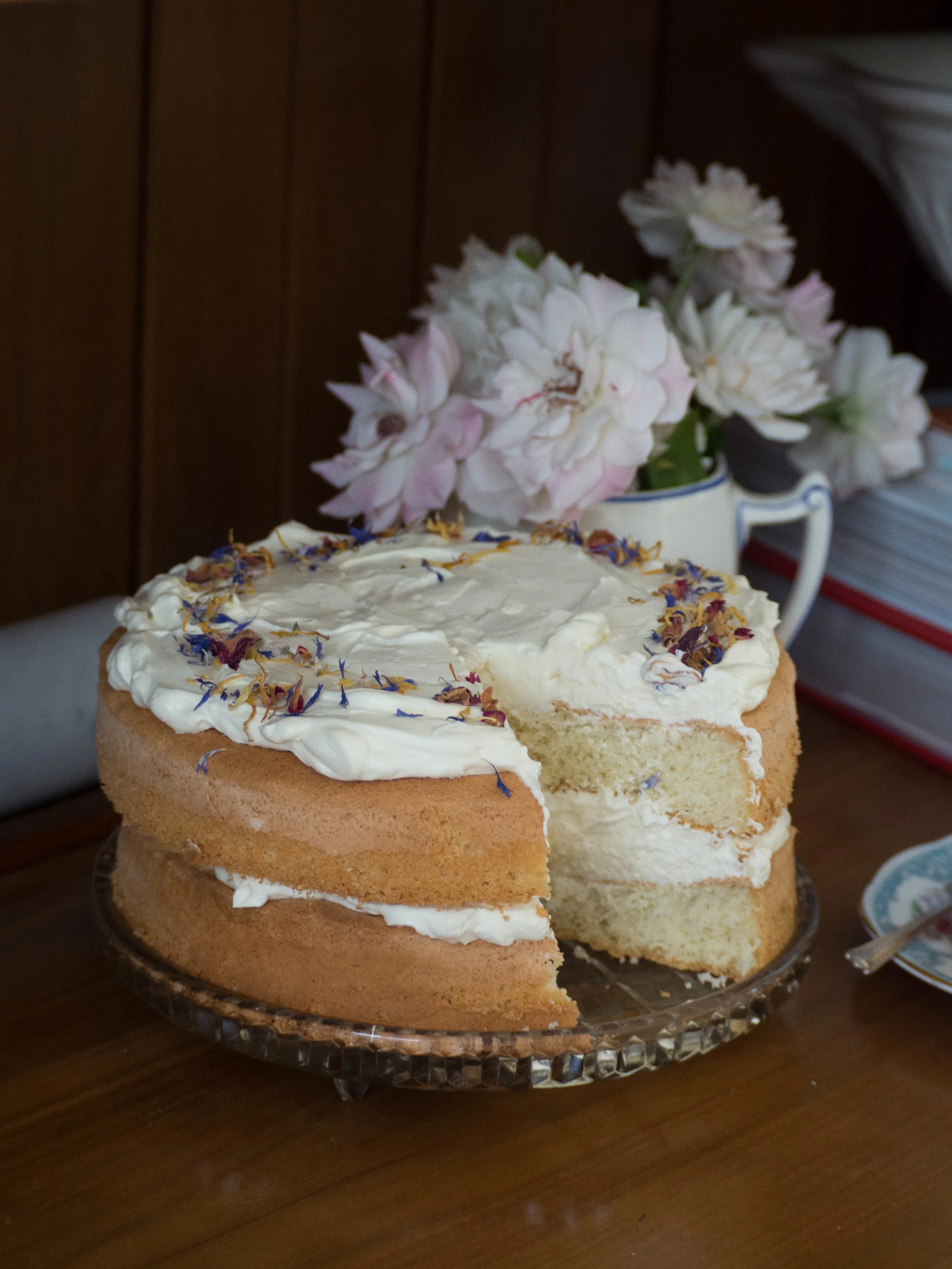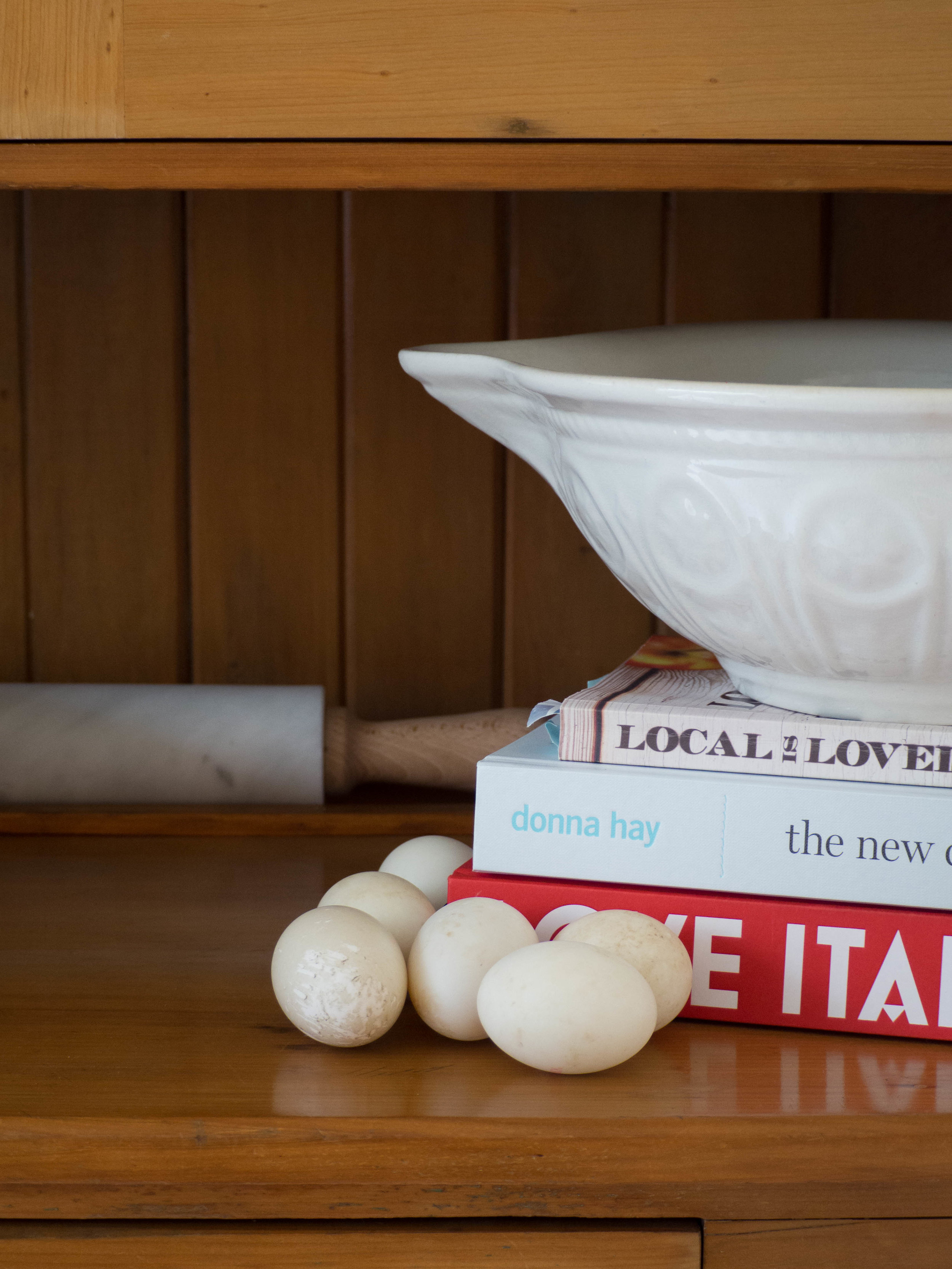Over the last few years, I have been on a somewhat unofficial sometimes unintentional quest to find the best sponge cake recipe. You’d think that a cake with such few ingredients would be the same all round, but they never are! Corn flour or all plain flour, or self raising flour, custard powder, melted butter or no butter? Each time I find a new recipe, it becomes my new favourite until months or years later, I stumble across a new one.
This particular recipe, was right under my nose the whole time, and it is by far the best I have found during my quest! It is from the book ‘Local is Lovely’, which is a small unassuming book, that is absolutely jam packed full of really good recipes. And when I mean jam packed I mean it! Every time I take a look through, I seem to add more sticky notes to another page for another recipe I want to make.
On this particular occasion I had bought some duck eggs, which was super exciting, but I wasn’t sure what to make with them. I had heard that duck eggs made good sponge cakes so I went looking for a recipe, and sure enough ‘Local is Lovely’ delivered the goods (again!). It turned out to be the nicest sponge cake ever, so now I can definitively say duck eggs do make really good sponges! The honey added to the cream is also a simple yet utterly amazing idea that gives the whole cake a subtle sweetness that was so incredibly more-ish.
I now keep an eye out for duck eggs, just in case I am given the opportunity to make this cake again. If you can’t find any, use five larger chicken eggs.
Duck Egg Sponge Cake
Ingredients:
x4 duck eggs
140g caster sugar or golden caster sugar
160g plain flour, plus extra for the tin
2 tsp baking powder
300ml pouring cream
90 ml honey
dried edible flowers, to decorate (optional)
butter, to grease the tin
Method:
If your duck eggs have been in the fridge, take them out and allow them to come down to room temperature.
Preheat oven to 180 degrees Celsius, and butter and flour two 20 cm loose bottomed cake tins.
In the bowl of a stand mixer, add the eggs and sugar. I suggest cracking each duck egg into a glass and pouring it into the bowl. Duck eggs have a harder shell than chicken eggs and I found that more of the shell shattered away (and into the egg itself) because a little more force was needed to crack them open. This way it is easier to remove any stray bits of shell before adding the eggs to the bowl.
Whisk the eggs and sugar together for about 10 minutes, on medium to high speed. The mixture will triple in size and become pale and fluffy.
While the eggs are whisking, measure the flour and baking powder into a separate bowl and whisk together to remove any lumps. Carefully add the flour and baking powder to the whisked eggs, gently and quickly folding it into the eggs with a large metal spoon.
Divide the mixture between the two prepared tins, and bake for 15-20 minutes. The cakes will be golden in colour and spring back when lightly touched.
Leave the cakes to cool in their tins for a couple of minutes. Place a sheet of baking paper on a cooling rack, and remove each cake from their tins on to the paper. This will prevent the cakes sticking to the cooling racks. Alternatively, you can leave the baking paper that is already on the base of each cake, and place them straight on the racks.
Once the cakes have cooled (this shouldn’t take too long), prepare the cream filling. Whip the cream until it has thickened and soft peaks are forming. Add the honey and whisk until combined. Place one of the cakes on a cake stand or serving plate, and top with 1/2 - 3/4 of the cream. Place the second sponge on top and finish with the remaining cream. Sprinkle dried edible flowers over the top of the cake to decorate.
Reference: Local is Lovely by Sophie Hansen (Hachette Australia, 2014), p.50.










